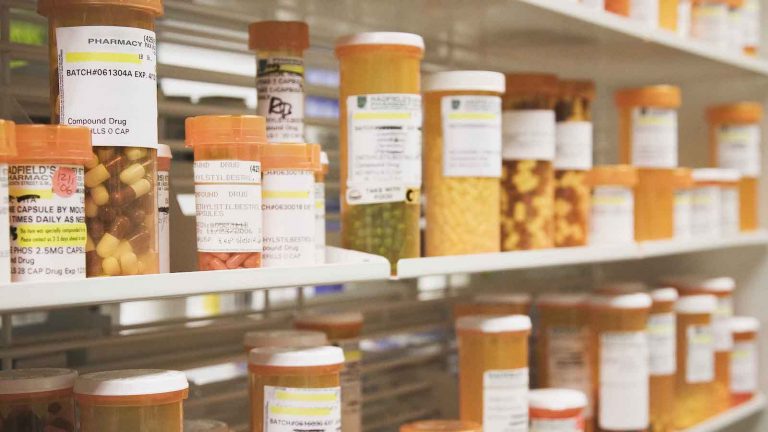Over the past four decades, the Food and Drug Administration (FDA) has been approving new prescription drugs faster. That’s a great thing, since quicker approvals give terminally-ill patients faster access to potentially life-saving treatments. Of course, some critics aren’t happy, and it’s leading them to wonder if the FDA needs to slow “its drug approval roll.”
But slowing down the approval process by bolstering the bureaucracy won’t help people—it’ll kill them.
It’s already slower than it should be. Sure, the approval process has been picking up, but drug development has become increasingly leaden, thanks to changes made to the Food and Drug Act in 1962. Known as the Kefauver-Harris Amendments, the regulatory burden for researchers, developers, and manufacturers has become far too much, and what once took four years now takes roughly 14.
According to calculations by Dr. Mary J. Ruwart in her book “Death by Regulation,” regulatory delays killed roughly 150 million people through 2009. That’s more than 10 times the number of Americans who died in all wars from our country’s founding to 2017.
These sheer numbers should spark change. In his op-ed for the National Review, Senator Ted Cruz astutely pointed out that the “numbers are more than mere statistics: Each number is a member of our family, a friend, or neighbor.”
Laine Manning VanHoutan was one such victim of this bureaucratic red tape. Laine had a rare, inherited genetic disorder of the nervous system called “CLN2 Batten Disease.” As Laine’s mother explained to a Chicago Tribune writer, the disease is “ruthless.” It robbed her daughter of the ability to walk, swallow, and communicate—and had robbed Laine’s older brother of his life in March 2016, just shy of his twelfth birthday.
Less than a month later, BioMarin Pharmaceutical, Inc. filed an application seeking FDA approval for a new Batten Disease treatment called Brineura, a medicine that clinical trials showed to effectively slow the disease’s progression.
The deadline for the FDA to review the application was January 27, 2017—a full year before Laine would be the same age as her brother when he died. It seemed like help was on its way.
Tragically, that wasn’t the case. The FDA delayed its review process by three months, and by the time Brineura was approved, it was too late for Laine. She had been in hospice care and struggled to breathe for several months, and, by that point, she was too far gone for Brineura to help.
Nearly two years after BioMarin filed for FDA approval of Brineura, 12-year-old Laine died.
Critics seem to think this is just the way things have to go. The New York Times editorial board suggests Food and Drug Administration Commissioner Dr. Stephen Hahn “slow down on drug and device approvals.” The board fears that the current process allows dubious medical products into the marketplace. Former FDA Principal Deputy Commissioner Dr. Joshua Sharfstein echoes their concerns and suggests a “pause” may be in order.
If they were right, then we’d see many drugs withdrawn from the market for being unsafe or ineffective as determined by the FDA. But that hasn’t been the case. According to a search of the Federal Register, the FDA made zero drug withdrawal determinations based on safety or efficacy in 2019. And in 2018, there was only one: Danocrine.
Danocrine was approved to treat endometriosis amenable to hormonal management, prevent attacks of angioedema of all types (cutaneous, abdominal, laryngeal) in males and females, and decrease nodularity, pain, and tenderness in patients with fibrocystic breast disease. The FDA conducted a benefit-risk analysis of all three indications, but only issued a safety and efficacy withdrawal determination for the indication of fibrocystic breast disease.
The number of withdrawals from 2018 and 2019 are on par with historical trends, too. From 1996 to 2015, the FDA issued withdrawal determinations based on safety and efficacy for 11 drugs, averaging out to roughly one per year. Most years had no withdrawals for safety or efficacy, while 2010 had the most, with three.
The data just don’t back up the critics’ fears.
There is evidence that drugs approved on a faster timeline are more likely to be associated with post-approval changes to their safety-related labeling, according to a study by Harvard professor Aaron Kesselheim. Because potential side effects and reactions cannot be completely identified by clinical trials, the FDA commonly updates prescription drug labels with new information from health care providers. However, Kesselheim also explained that the increased risk taken by approving drugs quickly is “reasonable” if the drug is very promising and meets a medical need for a serious or life-threatening condition.
With this in mind, why would we ever delay thousands, perhaps millions, of Americans the opportunity to try a potentially life-saving drug? The end just doesn’t justify the means, and far too much is at stake.














Incredible story there. What occurred after?
Good luck!
Here is my site: видеонаблюдение с записью